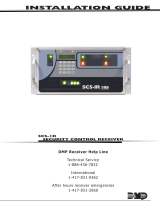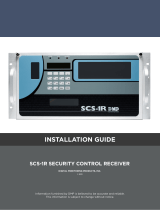
Serial Breaks _____________________________________________________________ 6-7
Alternate Break Sequences __________________________________________________ 6-7
Modem Mode_________________________________________________________________ 6-8
Remote User Dial-Up __________________________________________________________ 6-9
Event Port Logging and Email Notification _________________________________________ 6-11
Creating an Email Site _____________________________________________________ 6-13
Dial-Out ISP Connection_______________________________________________________ 6-14
SSH Connections ____________________________________________________________ 6-15
Defining Supported SSH Connections_________________________________________ 6-15
Creating an AUTHORIZED_KEYS File ________________________________________ 6-16
Shared Key Authentication Process___________________________________________ 6-16
Setting up RSA Shared Key Authentication (for SSHv1)___________________________ 6-17
Setting up DSA Shared Key Authentication (for SSHv2)___________________________ 6-18
Setting up Username/Password Authentication (SSHv1 or SSHv2) __________________ 6-18
Forming SSH Incoming Connections (Unix and Non-Unix) _________________________ 6-19
Security Enhancements________________________________________________________ 6-20
Incoming Security_________________________________________________________ 6-20
Port User Restrictions _____________________________________________________ 6-20
Com Port Redirector __________________________________________________________ 6-20
7: Troubleshooting________________________________________________ 7-1
Technical Support _____________________________________________________________ 7-1
Power-up Troubleshooting ______________________________________________________ 7-2
BOOTP Troubleshooting________________________________________________________ 7-3
RARP Troubleshooting _________________________________________________________ 7-3
Boot Prompt Commands________________________________________________________ 7-4
Flash____________________________________________________________________ 7-4
Flush NVR _______________________________________________________________ 7-4
Help ____________________________________________________________________ 7-4
Init 451 __________________________________________________________________ 7-5
Set Server BOOTP {Enabled, Disabled} ________________________________________ 7-5
Set Server Bootgateway ip_address ___________________________________________ 7-5
Set Server Hardware xx-xx-xx ________________________________________________ 7-5
Set Server IPAddress ip_address _____________________________________________ 7-5
Set Server Loadhost ip_address ______________________________________________ 7-5
Set Server RARP {Enabled, Disabled}__________________________________________ 7-5
Set Server Secondary ip_address _____________________________________________ 7-5
Set Server Software filename ________________________________________________ 7-5
v

























